There’s more to being a Boston Brahmin than simply having an early Puritan ancestor, graduating from Harvard and living on Beacon Hill.
You must not flaunt your wealth. You must shun glitzy resorts and you must be thrifty, perhaps traveling by T. The one new suit you buy a year must adhere to the Boston Brahmin dress code, now known as preppy. You must speak in your own British-sounding dialect. (To hear it, click here.)
You should probably marry a relative. Fortunately, you have plenty of choices, including Appletons, Bacons, Cabots, Codmans, Coolidges, Crowninshields, Forbes, Hunnewells, Lodges, Lowells, Parkmans, Perkins, Russells, Saltonstalls, Shattucks, Shaws and Winthrops.
You must eat roast beef on Sunday night and cold leftovers on Monday. That’s where the expression ‘cold roast Boston’ comes from. It was a favorite of Massachusetts Gov. William Weld, a Brahmin who persistently failed to stay out of the newspaper.
According to the Boston Brahmin code, you must only be mentioned in the newspaper when you are born, married and died. But many Brahmins, like Weld, couldn’t help but generate ink by taking high government office. Or running colleges, winning literature prizes or founding prep schools and orchestras. Or actually running newspapers themselves, like Boston Brahmin Benjamin Crowninshield Bradlee.
Brahmin Coined
Oliver Wendell Holmes, Sr., coined the phrase in 1861 in his novel Elsie Venner. In it he described Boston’s aristocracy as the “Brahmin Caste of New England.” Holmes wrote they believed destiny had set them apart to create a shining city on a hill. And they embraced the values of their Puritan forebears: hard work, thrift, culture and education.
Many Boston Brahmin families made their fortunes as merchants and financiers before Holmes published his novel. If you hadn’t made your money by then, the only way into the caste was to marry into it.
Some Brahmins were already wealthy when they arrived in the early 17th century. Weld used to joke that his ancestors sent the servants ahead on the Mayflower so they could prepare the summer cottage.
Brahmin Oliver Ames, on the other hand, made his own fortune. He started manufacturing shovels in 1803 in Easton, Mass. His sons, Oliver, Jr., and Oakes, then accumulated enough money to underwrite the Union Pacific Railroad. His grandson, Frederick Lothrop Ames, was an original stockholder of General Electric, and the family’s real estate holdings enabled them to build the Colonial Theatre and parts of MIT. They also built the Ames Building, the tallest building in Boston from 1893 to 1919. Another grandson, also Oliver Ames, won election as the 35th governor of Massachusetts.
Boston Brahmin vs. Boston Irish
The Boston Brahmin had no love for the Irish immigrants who arrived on famine ships during the 1840s. Young Brahmins founded the Immigration Restriction League in 1894 shortly after they graduated from Harvard. The League had as its champion Henry Cabot Lodge, Sr., who sponsored a bill in Congress that would have required newcomers to pass a literacy test to enter the country
As the Irish began to accumulate wealth and power, the Brahmins found themselves having to make concessions. In 1901, March 17 was declared a holiday. Of course it’s St. Patrick’s Day, but to save face the Brahmins called it Evacuation Day. It marks the day in 1776 when British troops left Boston.
Boston Brahmins founded the New England Watch and Ward Society, a puritanical group of private citizens active from 1878 to the 1920s. It made Boston a target of scorn and – unintentionally – heightened interest in the books and plays it banned.
Brahmins also founded the Boston Symphony Orchestra, the Peabody Essex and Isabella Stewart Gardner museums, WGBH, the Museum of Fine Arts and the Boston Athenaeum.
They followed their Puritan ancestors who started Boston Latin School, the first high school in the country. Brahmins founded elite college preparatory schools like Choate (now Choate Rosemary Hall), Groton, Andover and Phillips Exeter. Then they sent their children and grandchildren to them.
WASPy Snobs
Sociologist Harriet Martineau visited Boston in the 1830s and concluded its Brahmins were “perhaps as aristocratic, vain, and vulgar a city, as described by its own “first people,” as any in the world.”
Novelist John P. Marquand lampooned the circumscribed life of the Boston Brahmin in The Late George Apley. When Apley’s grandfather moved to the South End, he was shocked to see a man in shirtsleeves across the street. So he sold his house the next day and retreated to Back Bay.
George Apley also has a family estate in Milton (Nahant or Beverly would have worked as well). He stays at the Boston hotels in New York, London and Paris and doesn’t know what he would have done in life without the Club. (One Boston club, The Tennis and Racquet Club, had rooms heated only by fireplaces as late as 1958.)
T.S. Eliot‘s poem The Boston Evening Transcript gently mocks the Brahmin caste to which he belonged (though his family moved to St. Louis). The Transcript, published from 1830 to 1941, was the paper of record. The Brahmins loved its book reviews, music criticism, college sports page, bridge department and genealogy column.
In 1935, the Atlantic magazine printed a critique of the Brahmin by S. Foster Damon. In it, he wrote, “The Brahmins still lived on the water side of Beacon Street or the sunny side of Commonwealth Avenue, they still dined at two and had ‘tea’ at six, they read the Atlantic and the Transcript, held four receptions a year, escaped the Egyptian heat of summer by moving to the North Shore; sent their sons to Harvard and their dead to Mt. Auburn.”
More to the point was the poem by John Collins Bossidy:
And this is good old Boston,
The home of the bean and the cod,
Where the Lowells talk only to Cabots
And the Cabots talk only to God.
The Kennedys most certainly were not Boston Brahmins.
Boston Brahmin by Marriage
Isabella Stewart Gardner became a Boston Brahmin, at least technically, when she married John Lowell Gardner, Jr. However, she didn’t always adhere to the Brahmin code. Gardner posed for a painting in a low-cut dress, walked a lion down the street on a leash and scrubbed the steps of an Anglo-Catholic Church during Lent.
Former Secretary of State John Forbes Kerry is a classic example of Brahmin by marriage. His father was descended from Austro-Hungarian Jewish immigrants who converted to Catholicism. His mother had the Forbes ancestors, and one of her sisters paid for his prep school education.
The Forbes family had made an early fortune in the China trade, built the transcontinental railroad and went on secret missions for Abraham Lincoln. The family made even more money investing in Alexander Graham Bell’s telephone. Allan Forbes headed Boston’s State Street Bank and Trust Company in the 1950s. The family has its own quiet resort, Naushon Island, where a Forbes once grilled a stablehand on his thoughts about the Plantaganets.
When Kerry ran for re-election to the U.S. Senate in 1996, he opposed his distant cousin: William Weld. And when he ran for president in 2004, he followed in the footsteps of other Brahmin presidents and presidential aspirants: John Adams, John Quincy Adams, Henry Cabot Lodge, Jr., and Franklin Delano Roosevelt.
Photo: William Weld, By Gage Skidmore, CC BY-SA 3.0, https://commons.wikimedia.org/w/index.php?curid=50569492. This story about the Boston Brahmin was updated in 2024.
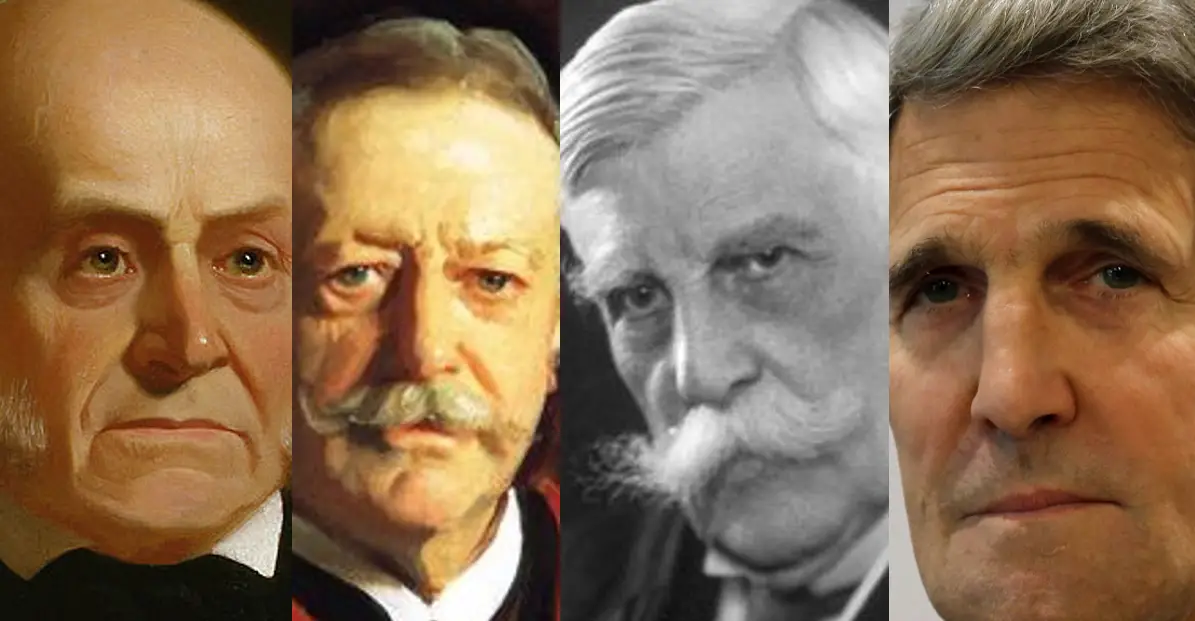
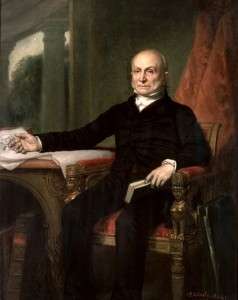

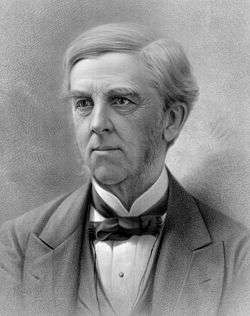
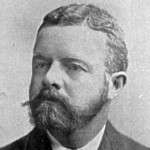

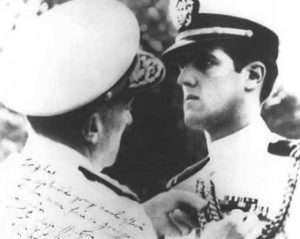
41 comments
[…] Eliot, though he grew up in St. Louis, was a member of the Boston Brahmin Eliots and summered in Gloucester, Mass. Eliot wrote “Old Possum’s Book of Practical Cats,” […]
About your article on the Boston Brahmin:
When was Henry Cabot Lodge a President of the United States? Perhaps this is an alternative fact?The renowned New England Historical Society should perhaps proofread to the last line of the article. Please fix this before someone reads it as fact.
Thanks for pointing out the error. Kerry wasn’t president either — we meant presidents and presidential aspirants. The correction has been made.
[…] Crosby was born June 4, 1898 to one of the wealthiest Brahmin families in Boston. He was Alexander Hamilton's great-great-great-grandson, and his forebears […]
[…] same name written by John Knowles. Knowles based his bittersweet coming-of-age story on his time at Phillips Exeter Academy in Exeter, N.H. So in 1972 when the filmmakers were adapting the story to the screen and needed a […]
[…] killing of an Irishman by the scion of a wealthy Brahmin family would worsen tensions between Boston’s ruling Yankees and its poor immigrant […]
[…] political opponent went so far as to compare Roosevelt to […]
[…] many Boston Brahmins stayed at McLean that it was said a proper Bostonian lived on Beacon Hill and had an uncle at […]
[…] the Boston Women’s Municipal League. They were 2,000 strong, and their members included Boston Brahmins and upper-middle-class strivers. The 1913 bulletin lists committees and departments littered with […]
[…] Massachusetts Association Opposed to the Further Extension of Suffrage to Women was founded by such Brahmins as Mrs. J. Eliot Cabot, Cornelia Baylis Lowell and Kate Gannett Wells. They attracted nearly 37,000 […]
i grew up with a grandmother whose family certainly considered themselves “Boston Brahmin”! At least they tried; they descended from a Mayflower passenger, Lived in or around Boston, and certainly kept relatives close by marriage. “Boston Brahmin” or they lived by those rules and several generations of Phineas Neal’s kept them firmly attached to the Boston area! I blew all chances with said Grandmother when, one Thanksgiving while she was dining with us my Mother ask for another roll and without thinking I tossed one to her down the long table which she caught! My Mother’s dirty look and my Grandmother’s pursed lips said it all; I was out of the will!
[…] he lived at his parents’ home with his wife, doing a lot of reading and writing. As a member of Boston’s Brahmin class, he was named in 1867 to the Boston Public Library board of trustees. After the death of one […]
[…] Tudor was born in to a Brahmin family on Sept. 4, 1783, the day after the signing of the treaty that ended the American […]
[…] Jr., died at 16 during his father's presidency. His death caused Calvin Coolidge to fall into a deep depression. Even as president he suffered from intense social anxiety, and his […]
[…] many of the wealthy families of Massachusetts had made money off the Triangle Trade, it was not viewed as a proper way to earn a […]
[…] slickers and the upper class considered bundling something that unrefined rustics did. Brahmin Charles Francis Adams, grandson of John Adams, wrote in 1891 that “the practice of ‘bundling’ […]
[…] many Boston Brahmins stayed at McLean that it was said a proper Bostonian lived on Beacon Hill and had an uncle at […]
[…] a Harvard PhD., the erudite author of more than a dozen books and, in many ways, the archetype of the Boston Brahmin of a century ago. His friend Thomas B. Reed, speaker of the House in the closing years of the 19th […]
[…] a Harvard PhD., the erudite author of more than a dozen books and, in many ways, the archetype of the Boston Brahmin of a century ago. His friend Thomas B. Reed, speaker of the House in the closing years of the 19th […]
[…] a Harvard PhD., the erudite author of more than a dozen books and, in many ways, the archetype of the Boston Brahmin of a century ago. His friend Thomas B. Reed, speaker of the House in the closing years of the 19th […]
[…] PhD., the erudite author of more than a dozen books and, in many ways, the archetype of the Boston Brahmin of a century ago. His friend Thomas B. Reed, speaker of the House in the closing years of the […]
[…] caste system to describe the very upper strata of American power, economic and political. A “Boston Brahmin” was a well-known phrase used to describe the inner sanctum of influential […]
[…] where free blacks clustered. In 1829 he bought a house on Bridge Street from George Parkman, a Boston Brahmin whose murder in 1849 would lead to a sensational […]
[…] Roberts moved comfortably among Boston’s Brahmin class, not as an equal but as an African-American […]
[…] albums are a part of the members-only library’s larger attempt to shed its reputation as an elite Boston Brahmin club and steer toward a more inclusive future. In the next few years, the albums will be digitized […]
[…] mill owners of Massachusetts had their eyes focused on the west as far back as the early 1800s, and they dreamed of a way to […]
[…] Puritans established the Boston Latin School. It then evolved into a bastion for the offspring of Boston Brahmins who wanted their children to attend Harvard. Its alumni include Saltonstalls, Adamses, Lowells, […]
[…] Crosby was a wealthy Boston Brahmin and World War I veteran. He and Polly Peabody had sex within two weeks of meeting. Then they […]
[…] wasn’t so much the city that did it, but a puritanical group of Boston Brahmins called the Watch and Ward Society. Boston’s own version of the Taliban, Watch and Ward policed […]
[…] here, for example and it’s intriguing how much it works for Americans, though I suppose the Boston Brahmin crowd and the Democrat ‘intelligentsia’ have a lot in common with many of the […]
[…] Lowell Woodbury led a committee of Brahmins to start a school to teach housekeeping to freed slaves and get them jobs. The school received 200 […]
[…] Her ancestor, Richard Dana, had arrived in Cambridge, Mass., from England in 1640, founding a Boston Brahmin […]
[…] York family that indulged all her whims and passions, and she had a lot of them. At 19, she married Boston Brahmin John Lowell ‘Jack’ Gardner. They lived in a large home on Beacon Street, where the young bride […]
[…] called themselves the Boston Women’s Municipal League. They had 2,000 strong members who included Boston Brahmins and upper-middle-class strivers. The 1913 bulletin listing committees and departments is littered […]
[…] the killing of an Irishman by a wealthy Brahmin would worsen tensions between Boston’s ruling Yankees and its poor immigrant […]
[…] the earthquake, the now-married couple were welcomed by his family. Boston society also accepted them when they returned. Until his death in 1768, Frankland observed November 1 as a […]
[…] that wasn’t entirely the case, as you shall see. Brahmins from New England with refined backgrounds also joined the Rough […]
[…] Jarvis was a Boston Brahmin who built a successful trading house dealing in European commodities. He got to know Lisbon, […]
[…] Adams was born Marian Hooper on Sept. 13, 1843 into a Boston Brahmin family. Her mother, Ellen Sturgis Hooper, won acclaim for her Transcendentalist poetry. Her father, […]
[…] Beacon Hill, one of its oldest neighborhoods, was once home to Boston Brahmins. Take a walk there and you’ll notice that some homes have purple tinted windows. And the panes […]
[…] Perkins was born a Boston Brahmin in April 1880. Her family took the unusual step of preparing her for secondary education, an […]
Comments are closed.